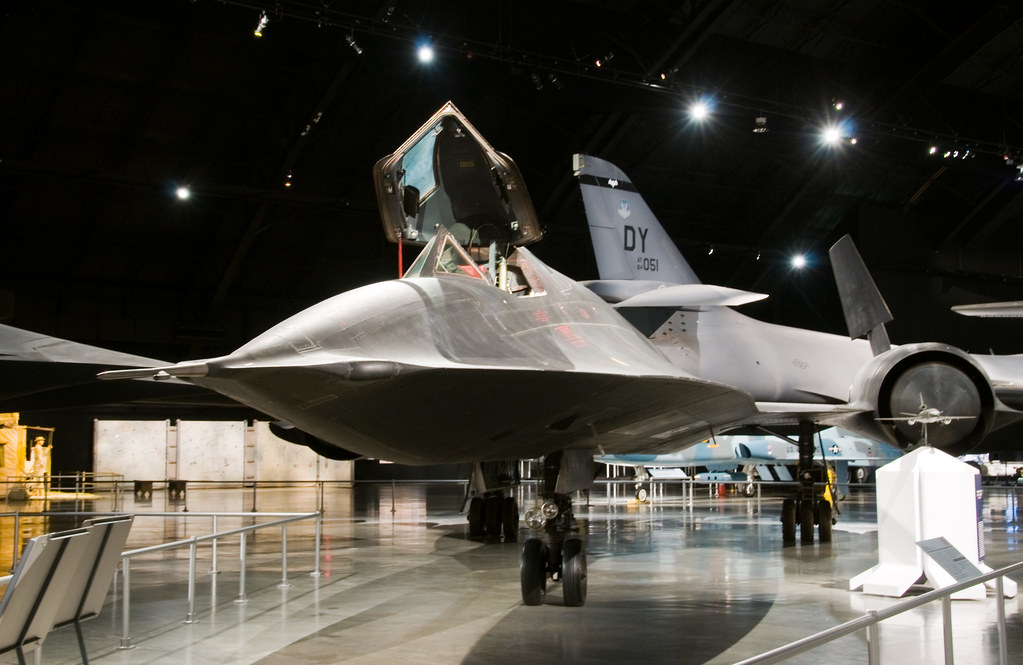

Lockheed SR-71A
A particularly difficult issue with flight at over Mach 3 is the high temperatures generated. As an aircraft moves through the air at supersonic speed, the air in front of the aircraft is compressed into a supersonic shock wave, and the energy generated by this heats the airframe. To address this problem, high-temperature materials were needed, and the airframe of the SR-71 was substantially made of titanium, obtained from the USSR at the height of the Cold War. Lockheed used many guises to prevent the Soviet government from knowing what the titanium was to be used for. In order to control costs, Lockheed used a more easily-worked alloy of titanium which softened at a lower temperature. Finished aircraft were painted a dark blue (almost black) to increase the emission of internal heat (since fuel was used as a heat sink for avionics cooling) and to act as camouflage against the night sky. The aircraft was designed to minimize its radar cross-section, an early attempt at stealth design. The call sign of the aircraft, "Blackbird", signifies the resistance of its airframe to visible light and radar detection.
The plane developed a small cult following, given its design, specifications and the secrecy surrounding it. Specifically, these groups cite that the aircraft's maximum speed is limited by the specific maximum temperature for the compressor inlet of 800 °F (427 °C). Recent studies of inlets of this type have shown that current technology could allow for inlet speeds with a lower limit of Mach 6. Much speculation exists regarding a replacement for the SR-71, most notably an aircraft identified as the Lockheed Aurora. This is due to limitations of spy satellites, which are governed by the laws of orbital mechanics. It may take 24 hours before a satellite is in proper orbit to photograph a particular target, far longer than a reconnaissance plane. Spy planes can provide the most current intelligence information and collect it when lighting conditions are optimum. The fly-over orbit of spy satellites may also be predicted and can allow the enemy to hide assets when they know the satellite is above, a drawback spy planes lack. These factors have led many to doubt that the US has abandoned the concept of spy planes to complement reconnaissance satellites.

No comments:
Post a Comment